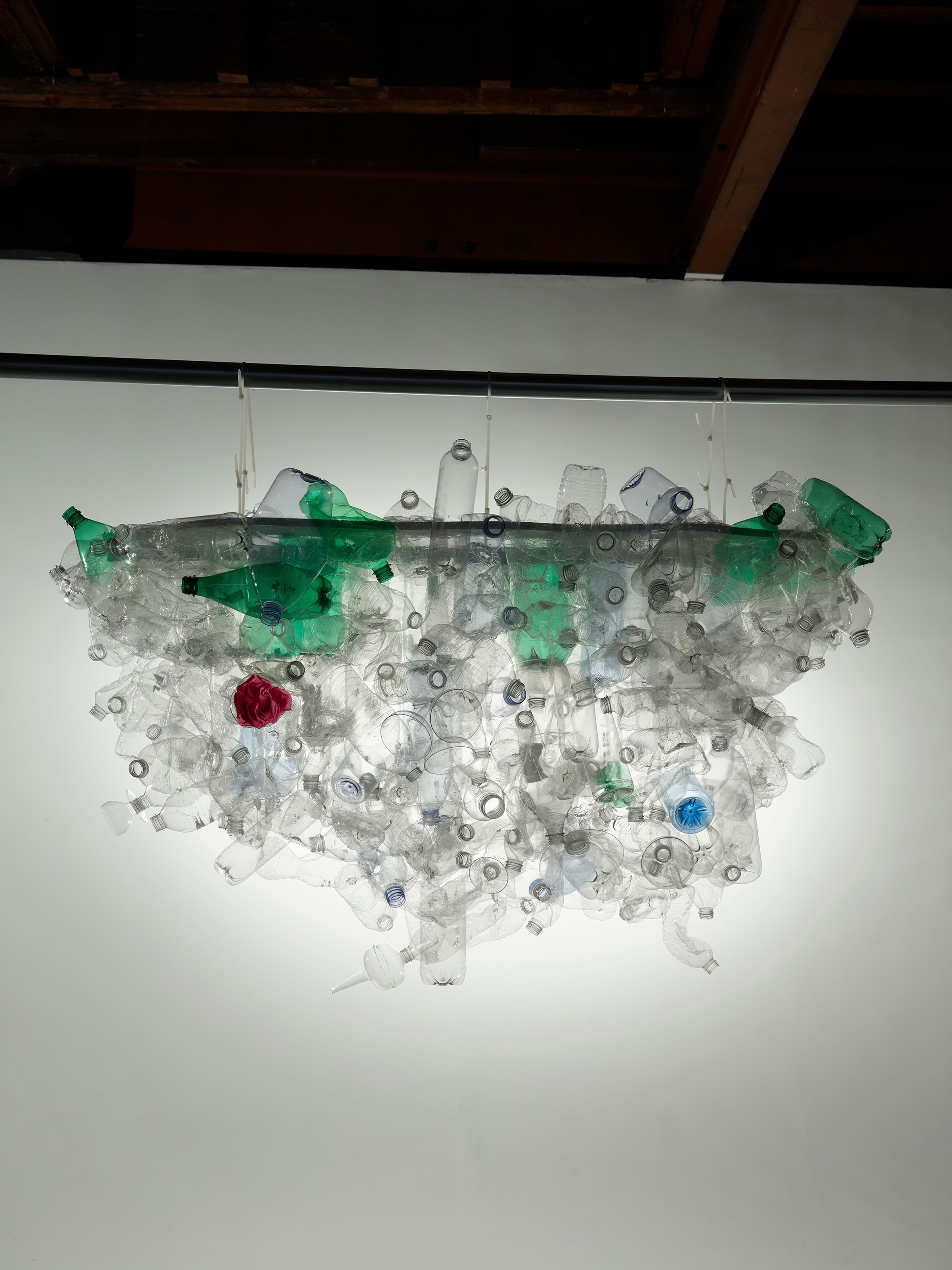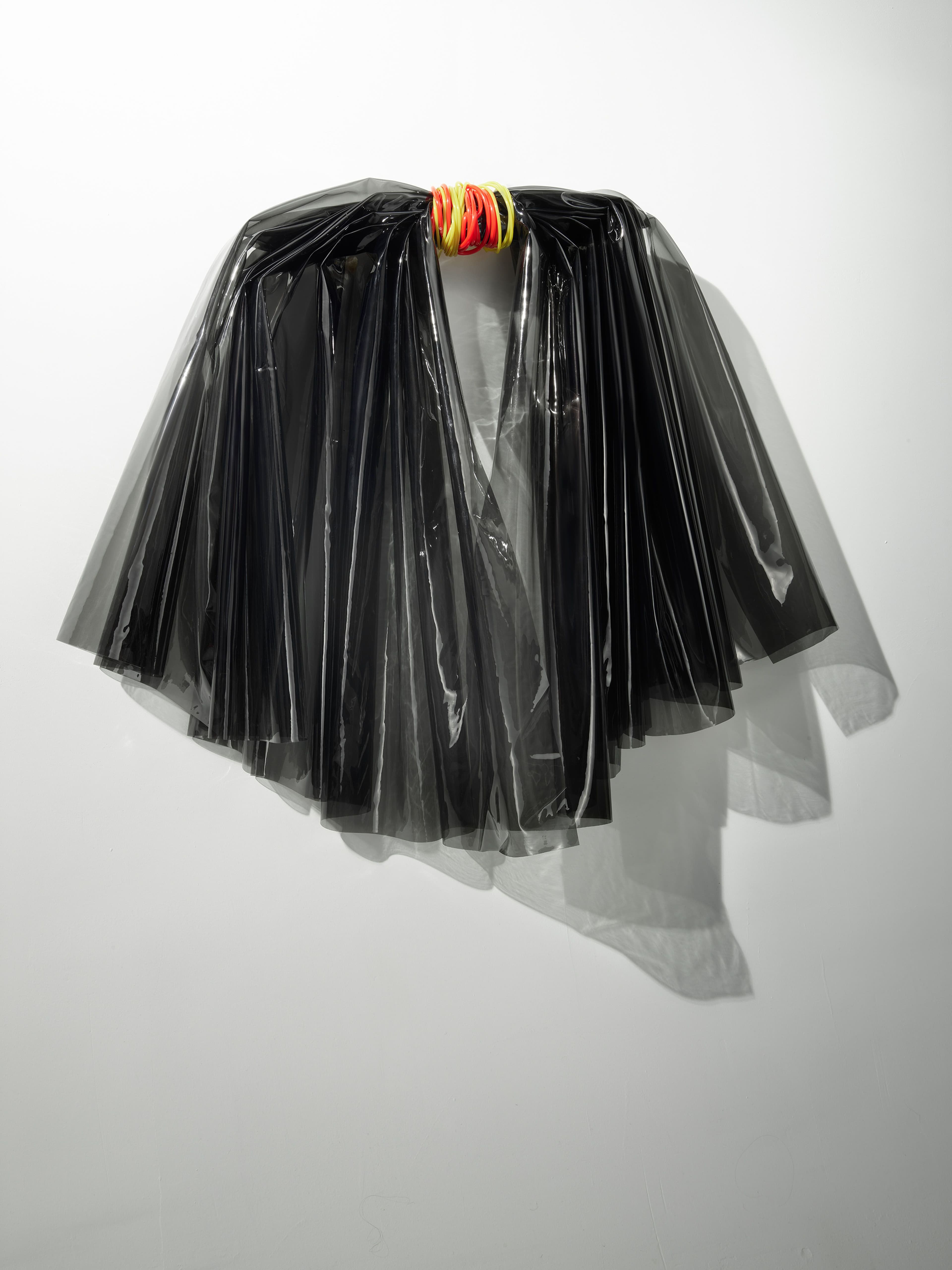
Transmutation
“Sustainable“ products have long been associated with the ability to recycle them, or at least the packaging they arrived in. As eco-conscious citizens, the minimum effort we take to prove we care about the planet is putting our household waste in the correct recycling bin. But is recycling really a legitimate way to combat waste in the age of the climate crisis, or have we been conditioned to ignore a more inconvenient truth?
First, what is recycling? In basic terms, recycling is a process that takes a material, breaks it down, and converts it back into the original material or something of roughly the same value. This can happen through either mechanical or chemical recycling. Mechanical recycling physically crushes and shreds a material to break it down, while chemical recycling liquifies the original material in a chemical solution.
Tin cans or glass bottles are the simplest examples of a closed-loop recycling process, where nothing is added and nothing is taken away. It takes significantly less energy to recycle these products than it does to create brand new ones out of virgin materials, and they can be continually recycled over time without a reduction in quality.

However, most of what is described to us as “recycling“ is actually downcycling, a process that turns waste materials into an item of lower value, or something that serves an entirely different purpose. For example, many textiles are downcycled into insulation material, cleaning cloths, or carpet fiber. Why? Because most modern clothing is not made from one-hundred-percent silk, nylon, or wool. Instead, it contains a mix of fibers such as cotton, polyester, and elastane in a single pair of jeans—plus the metal rivets, zips, and buttons. This makes the question of how to recycle unwanted clothes a complicated one to answer on an individual level. Meanwhile, how to recycle the hundred billion garments that the fashion industry produces annually at an industrial scale has become a herculean challenge.
Some companies have taken an alternative approach in their efforts towards tackling their waste footprint: turning single-use plastic bottles into recycled polyester (rPET). This is an example of downcycling that reveals the limitations of creating a closed-loop textile recycling system. While it may seem like a step toward a sustainable style utopia, or at the very least toward reducing the use of fossil fuels in the fashion industry, the problem is that taking a plastic bottle and turning it into yoga leggings or a fleece jacket means we are no longer able to close the loop. That jacket will never become a water bottle again and is unlikely to become another jacket. In fact, the soft drinks sector has recently called for tighter control over who gets access to plastic waste in order to invest in their own circularity and combat the ongoing rPET shortage. Notably, a recent investigation found that sixty-two percent of garments that claimed to be produced from recycled polyester actually contained virgin polyester to account for this skyrocketing demand.

Fraudulent claims like these are examples of greenwashing, a well-rehearsed brand tactic for misleading consumers that often exploits murky definitions of eco-terminology like “recycled“ and “recyclable“ to boost their sustainability credentials. This issue is illustrated in stark detail on Greenwash.com, a new website created by Changing Markets Foundation that showcases unsubstantiated green claims from fashion brands. Their research has exposed misinformation, such as a pair of ASOS trousers that were advertised as recyclable when in fact they contained a nylon-polyester blend that is not possible to recycle with current technology.
Another example of greenwashing is in the coffee industry, where Nespresso addressed the issue of aluminum coffee pods clogging up landfills by introducing a recycling scheme. Unfortunately, less than a third of these pods are actually recycled as part of this scheme. This is because the burden of recycling is left to time-starved consumers, while the brand can continue to produce disposable products at exactly the same rate. Similarly, even after McDonald’s swapped plastic straws for paper to boost their eco image, the fact remains that millions of its other single-use products hit the trash every day, with almost zero chance that consumers will rinse, dry, and recycle them after finishing their milkshake.

Claims like these are permissible on the market because they are passed off as aspirational. Sure, this product may not actually be accepted by a recycling facility at the end of its life, but theoretically, it has the capability to be recycled. For example, we can easily be misled by plastic packaging that features the “green dot“ logo with interlocking arrows or the triangular “mobius loop“ symbol. These icons scream “Recycle me!“ but don’t actually mean an item is recyclable. They just mean that with the right technology and infrastructure they could be, or that the producer financially supports recycling in the region. In turn, this forces consumers to be aspirational recyclers too, hoping that the food packet we carefully rinse out and put in the recycling bin will be dealt with accordingly. Not only does this redeem greenwashing brands, but also clogs up machinery in recycling plants and contaminates otherwise recyclable material.
Even when that packet is, in fact, certified to be recyclable or made from recycled materials, can it truly be sustainable when the brand is pumping out new products faster than they can ever be recycled? In many cases, brands that claim to be helping to reduce or eliminate waste by recycling are simply delaying a product’s eventual death in landfill. When brands overproduce, we overconsume.
Ultimately, we need to get to the root of this issue by addressing our culture of disposability and slowing down the cycle of waste. Governments have a significant role to play here by intervening in the form of legislation, such as implementing Extended Producer Responsibility (EPR) policies. The theory is simple—companies that make products should be held responsible for those products beyond the point of purchase. When brands are threatened with mechanisms of financial and legal accountability for their entire product lifecycle, unregulated overproduction and waste, along with planned obsolescence and barriers to repair, could become a thing of the past.

Of course, investment in innovative recycling technologies alongside the infrastructure they need to scale are crucial to building a fully circular economy. But here’s the elephant in the room: Without a reduction in resource use altogether, recycling will only scratch the surface. Fortunately, we can all contribute to scaling back on production and consumption with the original mantra of the environmental movement that many of us were taught as children: reduce, reuse, recycle. We need to remember that there is a reason that recycling comes last in that hierarchy.
Read this story and many more in print by ordering CERO04 here.
As a nonprofit arts and culture publication dedicated to educating, inspiring, and uplifting creatives, Cero Magazine depends on your donations to create stories like these. Please support our work here.


As a nonprofit arts and culture publication dedicated to educating, inspiring, and uplifting creatives, Cero Magazine depends on your donations to create stories like these. Please support our work here.






